| Revista Umělec 2002/2 >> The Unbearable Lightness of Things | Lista de todas las ediciones | ||||||||||||
|
|||||||||||||
The Unbearable Lightness of ThingsRevista Umělec 2002/201.02.2002 waanja | reviews | en cs |
|||||||||||||
|
"Jiří Černický, Brand New Rubbish,
Jiří Švestka Gallery, Prague, 19 April–1 June 2002 With Jiří Černický, no one has it easy. For some, his exultant application of socio-political problems in art may seem unbearable; for others it is his sophisticated, perfectly executed projects that are the turn-off. But these complaints are precisely why it’s good to take an interest in his work. Artists with his kind of energy who attempt to reach beyond local problems with explosive visual imagination can be counted on the fingers of one hand in the Czech Republic. With his lack of interest in the art scene and direct political context on the one hand and Černický’s spirituality and absorption in other cultures on the other, he is often led to work with more global issues. It’s understandable that his exhibition at Jiří Švestka Gallery (which usually exports young Czech artists rather than exhibiting them) aroused great interest. But compared to the exhibition BaRock three years ago, it doesn’t stand up as a whole. Bad installation certainly contributed to the failure as it looked more like a clearance sale in the open space of the gallery. More apparent though, is the shift Černický has gone through in the last three years. The most noticeable evidence of this being the erosion in exterior effect. Before it was almost hypnotic with bright colors, glittering trinkets, pop culture swirls. None of these adorn the current works. They appeared quieter but cut sharply to the content, the most powerful effect being the organization-production side of some installations. The most obvious weak point of the exhibition are the flashy visor-free motorcycle helmets: Here it makes no sense to go searching for some kind of content, because they’re formally linked to the hyper-successful helmets in his První sériově vyráběná schizofrenie (First Mass Produced Schizophrenia). Today he is obviously taking a shot at BMW, disguised in his Bore Misery Weeds. This seeming contrast between content and luxurious product is a constrained game; I didn’t really get what the word weeds in the acronym referred to, other than the letter w. Could it be a song from the latest Pulp album, where the letter w is a metaphor for immigrants? The shopping spree for this summer clearance sale quiets down as you approach the video (made for an exhibition at Post Gallery in Los Angeles). It shows a baseball catcher with a glove that has long strings of crystal beading fringing it. The catcher’s concentration and effort is never rewarded. The heavy beads swing in unpredictable ways and constantly cut his face and eyes. The routine thus ends with the ball falling from the glove and dreams of success quickly evaporate. A burka stitched together from various national flags stands nearby and serves as a sort of prop for a performance. It is part of a parallel exhibition of political art at Prague Castle. A simple and straightforward thing, it is linked to Černický’s long interest in Islamic terrorism (Bin Ladin’s Lamp, 2000). This is in line with the project by AES, a group of Moscow Israelis, who made computer montages showing postcard images of how European cities would look after continent-wide victory by the Muslims. An attachment requesting one Euro to support the American banking system indicates Černický’s inclination for unveiling and tying together various elements, applying layers in “baroque” style. However, in this case it seems redundant. Those interested in politics can do without such obvious hints, while others might take it as nothing more than a light wisecrack. The two photographs entitled Office — Berlin 1945/RamAllah 2002 are ineffective. Still, they are an impressive reminder of the fact that several generations throughout Europe don’t know what war is. Its destructive impact is familiar only through media images, and where else could war feel more terrifying than in the warm comfort of a modern office? All the above are mere details when compared to his Sony Garden (2000–2002), the most ambitious piece in the exhibition. Unfortunately, the more Černický puts in, the less the viewer gets back. The installation doesn’t say that all this Brand New Rubbish is about creating a perfectly clean consumer cycle, free of consumption, neither does it make any observations on the blending of Japanese hi-tech with its feudal past. Let’s then assume that Černický has attempted critically to express our global economy based on overproduction. One object topples this anarchist stance: computer equipment has been ground up and used as a byproduct, made to look like granules of cat litter. Although they don’t soak up liquid very well, there’s another function here: instead of rubbish, we get recycling. Apparently Černický couldn’t resist this “witty” idea, however shaky it might be on the conceptual side. After all, how can you expect to maintain a critical position when the entire exhibition wouldn’t have been possible without support from Sony? Subversion turns into a recycled Zen garden, which could also be planted in a corporate lobby. What we’re left with is an empty gesture that is reminiscent of more complex and more subversive works by other artists. Svala Thorsdottir, an Icelandic artist living in Berlin, founded Thor’s Daughters Pulverization Service in 1993. The mission of this conceptual company is to pulverize products to dust. She took objects of a particular kind (a bowl, a bra), took them apart and then ground them to dust, which she kept in preservative jars labeled with the weight and date of “processing.” Her destruction is consistent. She does not rely on poetics, and instead aims directly at the system of capitalist production. Similarly, artist Michael Landy last year sabotaged the very spirit of capitalist ownership — the desire for undisturbed acquisition of property. He made a list of all his property, including his artworks and Saab, and then had everything destroyed. While Thorsdottir mocked capitalized work, KLF (Jimmy Cauty and Bill Drummond) in 1991 sent the most abstract symbol of capitalist economy into the realm of the abstract when they burned one million pounds. By comparison, Sony Garden merely looks like a good idea. Instead of thinking through the context of consumption systems, the emphasis was shifted to effective execution and decorative use of exotic culture. While Černický’s earlier exhibition, BaRock, gave the impression of a magazine that contained various individual issues capable of resonating in every one of us (ambition, allergies, domestic violence, mental breakdowns, dreams and desires), Brand New Rubbish is like reading front page headlines in the daily press. Nevertheless, right next to the junk, viewers come across a pair of loafers that have grown together at the step-ins, a vivid reminder of Černický’s “old times.” This fascinating connection with an external effect, personal desire and its industrial production are proof of the fact that the personal is always political. "
01.02.2002
Artículos recomendados
|
|||||||||||||
|
04.02.2020 10:17
Letošní 50. ročník Art Basel přilákal celkem 93 000 návštěvníků a sběratelů z 80 zemí světa. 290 prémiových galerií představilo umělecká díla od počátku 20. století až po současnost. Hlavní sektor přehlídky, tradičně v prvním patře výstavního prostoru, představil 232 předních galerií z celého světa nabízející umění nejvyšší kvality. Veletrh ukázal vzestupný trend prodeje prostřednictvím galerií jak soukromým sbírkám, tak i institucím. Kromě hlavního veletrhu stály za návštěvu i ty přidružené: Volta, Liste a Photo Basel, k tomu doprovodné programy a výstavy v místních institucích, které kvalitou daleko přesahují hranice města tj. Kunsthalle Basel, Kunstmuseum, Tinguely muzeum nebo Fondation Beyeler.
|








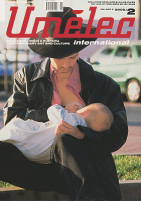


















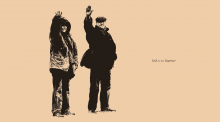
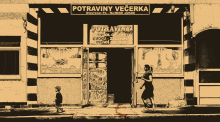
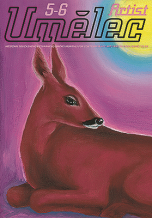
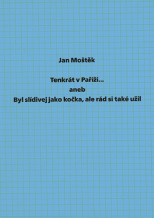


 New book by I.M.Jirous in English at our online bookshop.
New book by I.M.Jirous in English at our online bookshop.
Comentarios
Actualmente no hay comentariosAgregar nuevo comentario